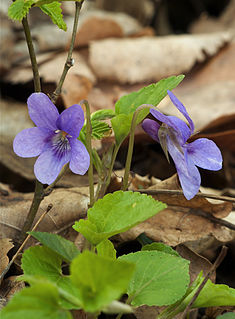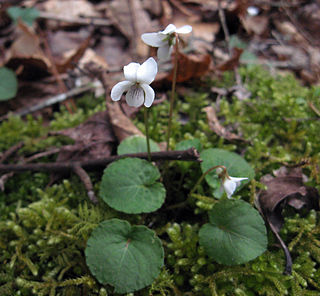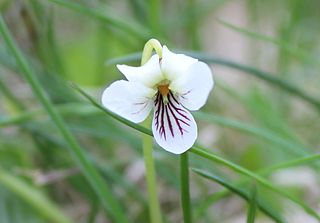
Boonoo Boonoo National Park is a national park in New South Wales, Australia, 571 km north of Sydney and 26 kilometres north east of Tenterfield off Mount Lindesay Road.

The Nightcap National Park is a national park situated within the Nightcap Range in the Northern Rivers region of New South Wales, Australia. The 8,080-hectare (20,000-acre) park was created in April 1983 and is situated 35 kilometres (22 mi) north of Lismore. The national park is classed by the IUCN World Commission on Protected Areas as Category II and is part of the Shield Volcano Group of the World Heritage Site Gondwana Rainforests of Australia inscribed in 1986 and added to the Australian National Heritage List in 2007. The park was severely burned during the 2019-2020 Australian brushfire season, and its biodiversity has likely been decimated.

Yuraygir is a national park in New South Wales, Australia, located 482 km (300 mi) northeast of Sydney. It was created in 1980, a result of the merger and enlargement of two national parks, Angourie and Red Rock National Parks, both of which had been established in 1975. At the time of its establishment in 1980, the park was fragmented, and parcels of land were bought over the following two decades to unite segments into a more contiguous protected area. Sometimes these acquisitions required protracted negotiations with land owners.

Viola is a genus of flowering plants in the violet family Violaceae. It is the largest genus in the family, containing between 525 and 600 species. Most species are found in the temperate Northern Hemisphere; however, some are also found in widely divergent areas such as Hawaii, Australasia, and the Andes.

Viola riviniana, the common dog-violet, is a species of the genus Viola native to Eurasia and Africa. It is also called wood violet and dog violet. It is a perennial herb of woodland edges, grassland and shady hedge banks. It is found in all soils except acid or very wet.

Viola biflora is a species of the genus Viola. It is also called alpine yellow-violet, arctic yellow violet, or twoflower violet. It is found in Europe, Siberia, Central Asia, Pakistan, western and northern China, North Korea, Japan, and Western North America.
The New South Wales Office of Environment and Heritage (OEH), a former division of the Government of New South Wales between April 2011 and July 2019, was responsible for the care and protection of the environment and heritage, which includes the natural environment, Aboriginal country, culture and heritage, and built heritage in New South Wales, Australia. Until its abolition in 2019, the OEH supported the community, business and government in protecting, strengthening and making the most of a healthy environment and economy within the state. The OEH was part of the Department of Planning and Environment cluster and managed national parks and reserves.

Viola canadensis is more commonly known as Canadian white violet, Canada violet, tall white violet, or white violet. It is widespread across much of Canada and the United States, from Alaska to Newfoundland, south as far as Georgia and Arizona.

The black-striped wallaby, also known as the scrub wallaby or eastern brush wallaby, is a medium-sized wallaby found in Australia, from Townsville in Queensland to Narrabri in New South Wales. In New South Wales, it is only found west of the Great Dividing Range. It is decreasing in these areas, but is not classified as threatened as a species yet. The New South Wales population, however, is classified as endangered.

The National Parks and Wildlife Service (NPWS) is a directorate of the Department of Planning, Industry and Environment formerly the Office of Environment and Heritage which was the main government conservation agency in New South Wales, Australia.

Viola adunca is a species of violet known by the common names hookedspur violet, early blue violet, sand violet, and western dog violet. It is native to meadows and forests of western North America, Canada, and the northern contiguous United States.

Viola blanda, commonly called the sweet white violet, is a flowering perennial plant in the Violet family (Violaceae). It is native to parts of south-eastern and south-central Canada and the eastern, and north-central, United States. Its natural habitat is in cool, mesic forests.

Viola macloskeyi is a flowering perennial plant in the violet family (Violaceae).

Adenanthos meisneri, commonly known as prostrate woollybush, is a species of shrub in the family Proteaceae. It is endemic to the south-west of Western Australia.

Persoonia glaucescens, commonly known as the Mittagong geebung, is a species of flowering plant in the family Proteaceae and is endemic to New South Wales. It is an erect shrub with smooth bark, hairy young branchlets, lance-shaped leaves with the narrower end towards the base, and yellow flowers. It is the only persoonia in eastern Australia with strongly glaucous leaves.
Grevillea wilkinsonii, commonly known as the Tumut grevillea, is a shrub which is endemic to a small area of the South West Slopes, New South Wales in Australia.

Viola selkirkii is a species of violet known by the common names Selkirk's violet and great-spur violet. It is native throughout the Northern Hemisphere, its distribution circumboreal.

The Queanbeyan Nature Reserve is a protected nature reserve that is located in the Southern Tablelands region of New South Wales, in eastern Australia. The 67-hectare (170-acre) reserve is situated approximately 4 kilometres (2.5 mi) west-south-west of the City of Queanbeyan.

The New South Wales Department of Planning, Industry and Environment (DPIE) is a department of the New South Wales Government responsible for effective and sustainable planning and the development of industry to support the growth in the state of New South Wales, Australia. It makes plans based on evidence for the state’s cities and regions, working with the community, business and local government to create places for people in NSW to live, work and spend their leisure time, while ensuring good access to transport and other services like shops and restaurants. The Department is also responsible for the evidence-based assessment of state significant development applications.















